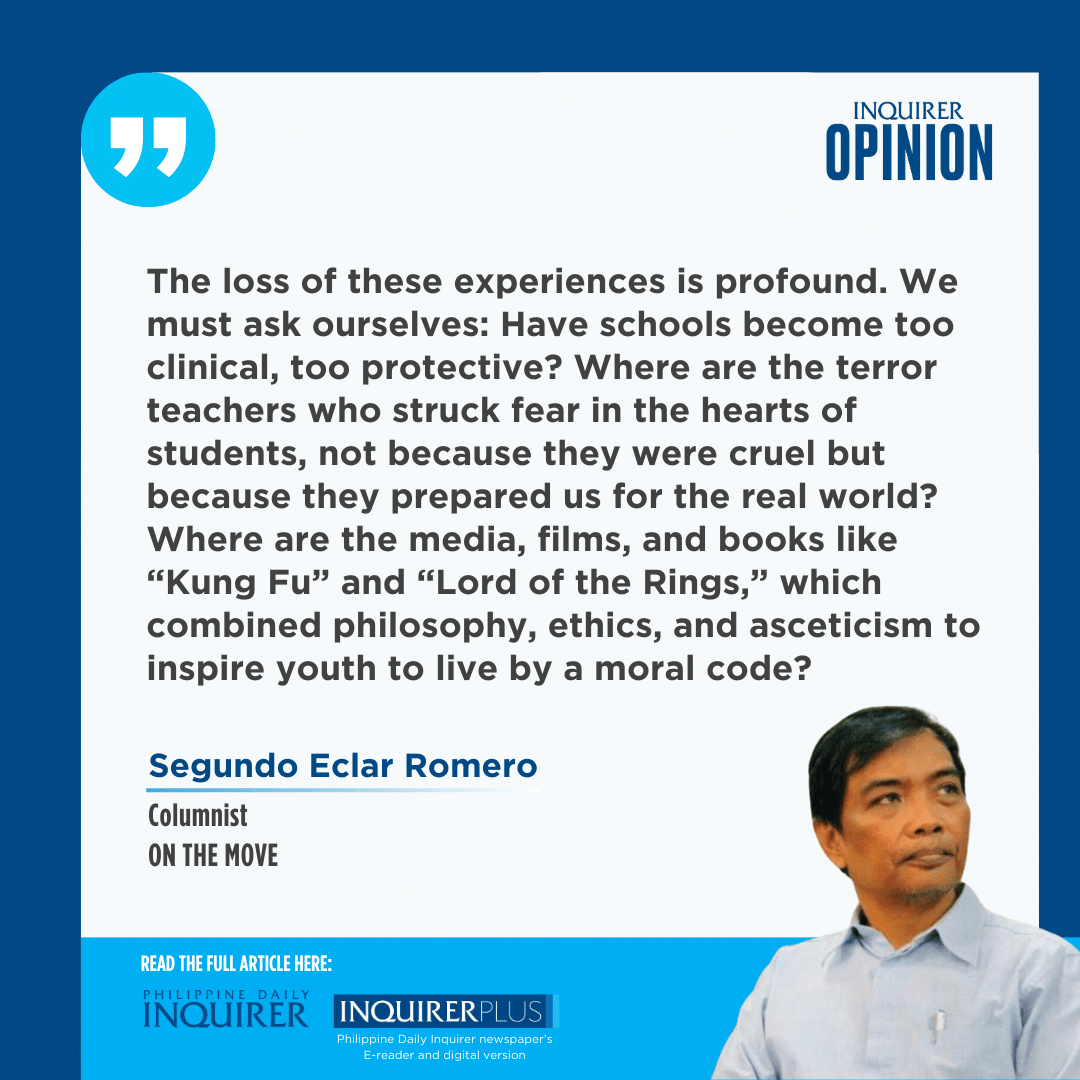Reflections on youth today and yesterday
Listening to the eulogies for recently departed friends, colleagues, fraternity brothers, and fellow travelers from the 1960s and 1970s, I was flooded with memories of those days. Meeting with long-lost contemporaries in these events left me reflecting on the stark contrast between our experiences as students and those of the youth today. The resilience we built, forged through trials that sometimes seemed insurmountable, feels distant from the world in which students now live—where even the idea of a surprise quiz might provoke complaints from parents to school administrations.
The question that haunts me is this: What is the state of resilience-building among our youth today? Have we, as educators and institutions, inadvertently become complicit in this narrowing window of experiences that once cultivated strength and adaptability in students? There is growing concern that today’s youth are being “babied”—protected from the very conditions that once prepared them for the real world. Are we sheltering them too much in schools, creating an artificially risk-free environment that bears no resemblance to the challenges they will face when they enter professional life?
Article continues after this advertisementOr, perhaps, were we wrong all along? Did the harsh conditions of our youth—especially for those who lived through martial law—break more people than it built? Many of the brightest among us were drawn into student activism, a cause that sometimes led to early death or a life too damaged by trauma to ever return to normal. Was this exposure to extreme challenges the wrong approach, or was it a necessary crucible for leadership?
The youth of yesteryear were accustomed to physical and mental challenges. During my elementary school days, I would walk the length of Tarlac town selling popsicles, occasionally terrorized by older youth who would eat all my wares after playing basketball without paying. Merely being in school was a privilege, a respite from the toils of the unschooled. Today, the focus of students seems to have shifted to grades and career pathways, their education narrowly defined by rigid course structures, rather than the wider, riskier, and more enriching experiences we once took for granted.
As a professor at the University of the Philippines during the post-people power years, I was able to introduce my students to leaders like Kumander Dante in Tarlac and farmers’ cooperatives in Nueva Ecija. These were unschooled yet intellectually powerful people whose struggles against oppression brought the concepts of justice, resilience, and activism to life in ways textbooks never could. Where are those experiences for students today?
Article continues after this advertisementMental resilience was once a core aspect of growing up. Today, however, we face an epidemic of mental health crises among the youth. The specter of youth suicides and widespread anxiety has forced schools to adopt a much more sensitive approach, even passing confidential notes to teachers about students at risk. This was unheard of in our time, yet it is a reality we must deal with today. But how do we find a balance—how do we create a learning environment that pushes students to flex not only their mental muscles but their physical, political, and psychological ones too? Are we, as educators, responsible for the way we have designed today’s “risk-averse” learning experiences?
Where are the formative influences for today’s youth—the equivalents of “If” by Rudyard Kipling, which gave generations advice on how to be a man or woman of integrity? Today, giving such advice is politically incorrect, and even complimenting a girl can be construed as inappropriate. Society has shifted, but in doing so, have we lost something essential? Have we lost the schools as arenas for resilience development? Have we lost student activism as an extension of youthful idealism?
The loss of these experiences is profound. We must ask ourselves: Have schools become too clinical, too protective? Where are the terror teachers who struck fear in the hearts of students, not because they were cruel but because they prepared us for the real world? Where are the media, films, and books like “Kung Fu” and “Lord of the Rings,” which combined philosophy, ethics, and asceticism to inspire youth to live by a moral code?
In losing these things, have we lost the tools to build the next generation of resilient, engaged citizens?
doyromero@gmail.com

















